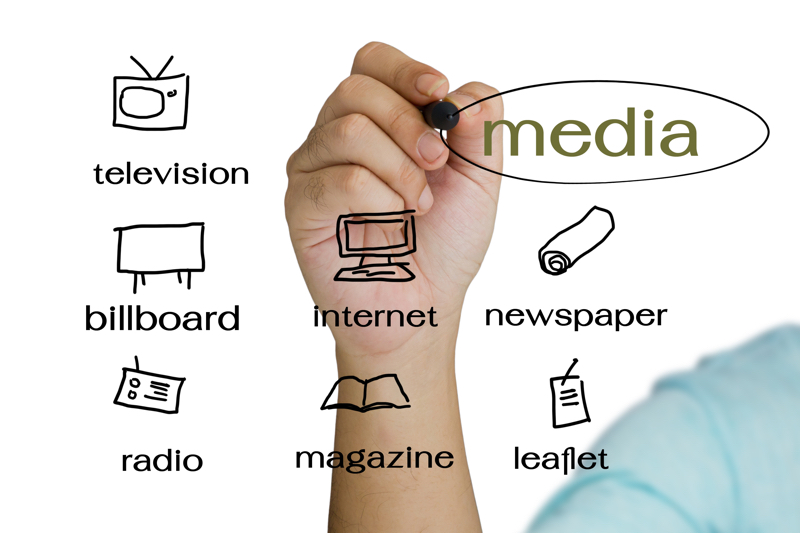A couple of weeks ago, Spotify published the results of new research it conducted earlier this year exploring how people engage with different media. It’s an interesting read: the research uses neuromeasurement to get a sense of how the brain responds when we consume different types of content, and the results are written up in a thoughtful way. The conclusion it reaches is that digital audio generates greater engagement and emotional resonance among listeners than broadcast radio (and Spotify performs even better than digital audio), and that therefore digital audio is the best medium on which advertisers can spend their money.
The results aren’t surprising – Spotify commissioned the research, and wouldn’t publish the results if they didn’t reflect favourably on digital audio – but if you regularly read media research you may remember similar claims being made about TV and its superiority as an ad medium. In fact, around the same time that Spotify published the results of this research, thinkTV in Canada updated its ‘Power of TV’ deck, which includes research results showing TV is far better than radio and digital media at capturing attention, and thus is the best place for advertisers’ dollars.
And those of you with long memories or a particular interest in media research may also recall an article by Mark Barber of RadioCentre on WARC, exploring the challenges of using attention as a measure of impact for audio formats such as radio or Spotify, and highlighting that standard attention-based metrics don’t necessarily indicate the suitability of different audio channels for advertising.
What Marketers Should Take from Broad-Brush Studies
So what should marketers learn from this type of research? Is there any value in its conclusions and, perhaps more importantly, how should brands incorporate its findings into their thinking about their own campaigns?
Firstly, there is undoubtedly some merit to Spotify’s research and its results. Listening to audio content on demand can generate more focus and engagement than broadcast radio, at least some of the time, because listeners are invested in the album, playlist or show they chose to play. And arguably, this effect applies to podcasts in particular, as they combine both the engagement that comes from being on-demand with the more attentive listening that spoken word content can demand.
But at the same time studies like this and the research cited by thinkTV that try to condense a whole medium down to a single set of figures such as “attention” present an overly simplistic picture of the numerous different ways in which we interact with different types of content. TV can be a source of gripping must-watch drama and also of background noise while you’re cooking; listening to audio content (whether on the radio or through Spotify) can be classical music in the background or a nuanced and thought-provoking podcast or talk radio segment. How much you focus on or engage with what you’re listening to isn’t constant, regardless of the format, but depends on a huge range of context like the setting (at home, in the car, at work), the time of day, your mindset, what else you’re doing at the same time and so on. So any research that claims categorically that one medium generates more engagement or attention than another without taking into account these myriad different consumption occasions somewhat reduces the relevance of its own conclusions.
That same complexity applies to advertising, and understanding its impact too. Every single audio ad campaign has countless factors at play even beyond where and how a listener is listening, such as the campaign’s audience, the messaging and tone, the nature of the creative and the ad format (15 second radio ad, 30 second host read etc). So this type of broad-brush finding that “this medium always has more attention than that medium” isn’t particularly relatable to any individual advertising campaign.
Research’s Role for Marketers
But the wider point, about the importance of understanding how listeners are engaging with an ad campaign and responding to its messaging, is one that should be central to the thinking of every marketer and brand. Research is a core pillar of this understanding; from more complex approaches such as media mix modelling and attribution to simpler studies involving surveys of a campaign’s core audience, well-designed research is an invaluable tool for marketers.
For audio ad campaigns, the best place to start is in exploring how listeners are reacting to your creative. Do they like it, is it resonating with them, and does it have any effect on their awareness of or attitudes towards your brand? This exploration can be done ‘in the wild’ (surveying people who have heard a campaign in the course of their regular listening), or in a more structured environment with controlled-exposure testing. Each approach has its benefits; but both are relatively straightforward and, while they don’t involve neuromeasurement, can still produce robust proof points around the impact and value of a well-thought-out audio campaign, whether it’s running on radio, Spotify or other channels.
Nick Drew is a senior research consultant with Signal Hill Insights. He leads many of the firm’s ad effectiveness and brand lift studies, applying his client side expertise from heading up research for Yahoo in Canada and LATAM and previous roles with The Financial Times and Microsoft. You can reach Nick by email here.
Signal Hill Insights is an audio research consultancy. We partner with publishers, broadcasters and advertisers to tap new opportunities in audio. If you’d like to know more about our brand lift studies or the other audio research we do, visit us at https://signalhillinsights.com/
